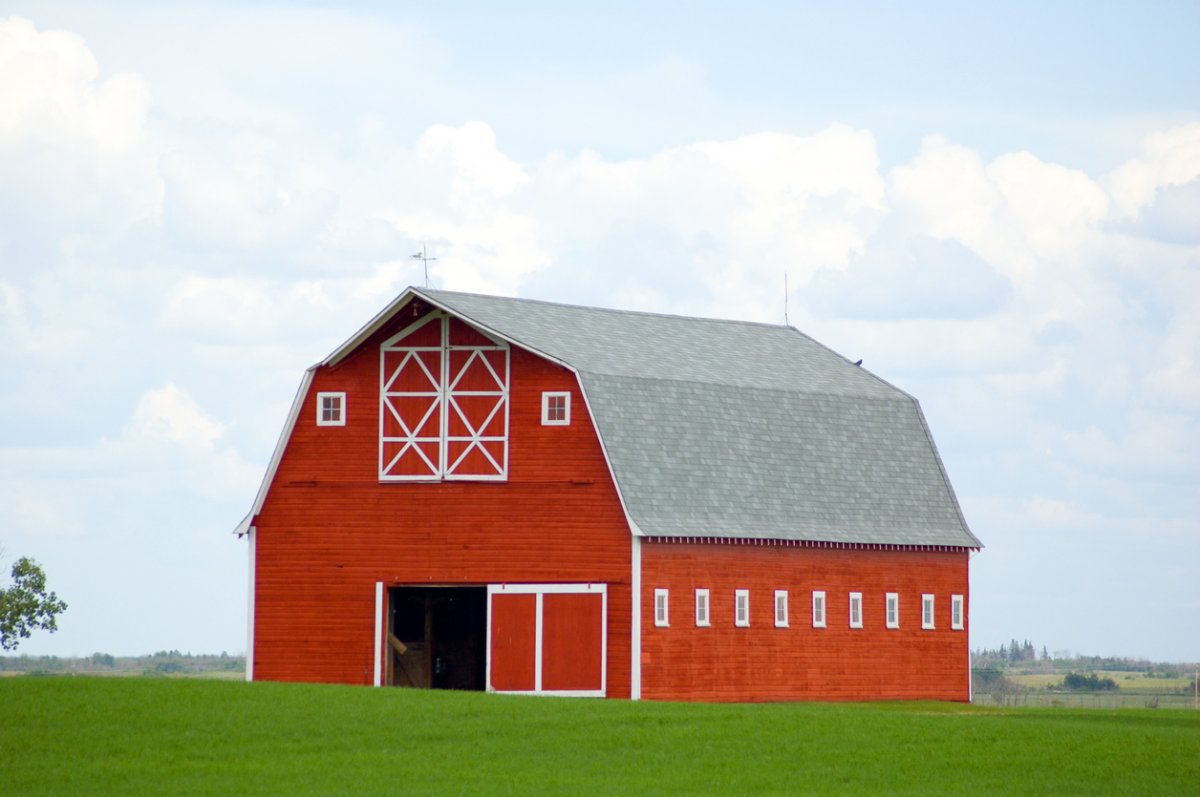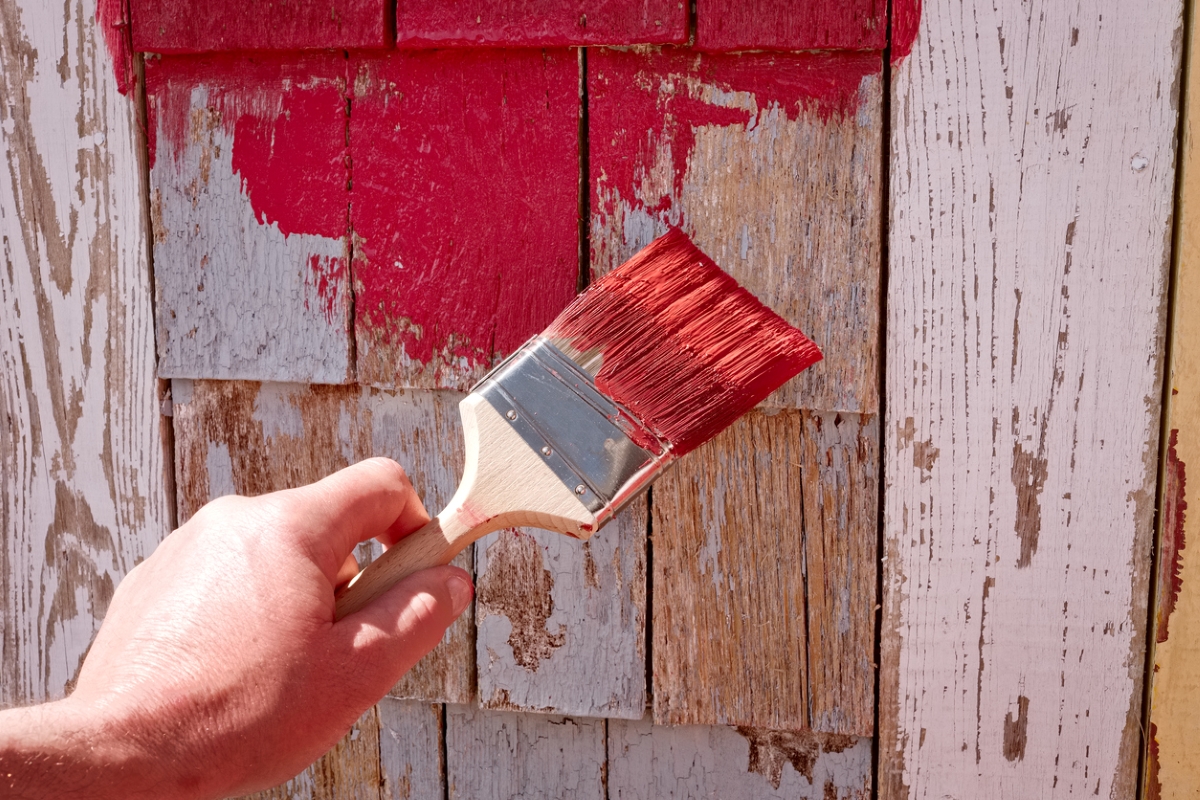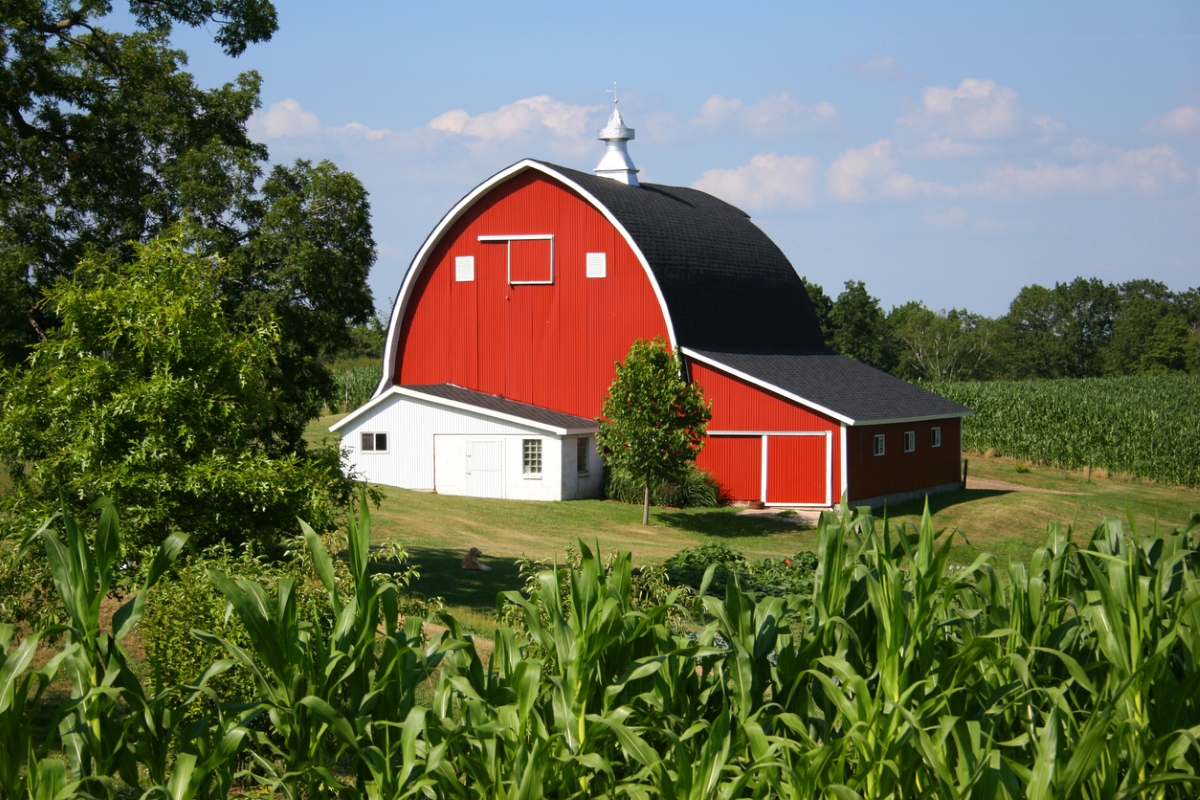

We may earn revenue from the products available on this page and participate in affiliate programs. Learn More ›
Q: While on a weekend road trip through New England, New York, and Pennsylvania, I couldn’t help but notice how many barns are painted red. I had never considered it before, but why are barns red? Is it just tradition, or is there more to it?
A: Barns were historically painted red out of practicality. A quick jaunt through farm country almost anywhere in the U.S. will reveal the same story: beautiful red barns strewn across grassy landscapes.
Red is one of the most popular barn colors—if not the single most popular color for barns—and it’s been that way for hundreds of years. There are several theories on why that is, but like most things colonial, old red barns’ coloration was born out of necessity.
RELATED: The 15 Best Paint Brands
Historically, farmers treated barn exteriors to protect them.
Barns were critical to early American settlers. They needed them in order to house their livestock and equipment, especially during brutal Northeast winters. Because barns were so important, farmers needed to protect these structures from the elements, and one of the ways they did this was by sealing their exteriors.
A common mixture that farmers used to seal barns was linseed oil, lime, and skimmed milk. Notably, linseed oil (made from flax seeds) has a natural orange hue to it. But it’s plain to see that these countryside structures aren’t orange, so where did the barn-red color come from?

Some speculate that barns’ red coloring was once derived from animal blood.
There are a lot of theories about how that linseed oil mixture transformed from orange to red. Some claim that wealthy farmers would add the blood of their recent slaughter to the oil mix, which would supposedly give it a reddish color before turning an even deeper red after oxidizing on a hay or pole barn.
There isn’t much historical data on the topic, unfortunately, so no one can say for sure whether this is true. However, many farmers didn’t have the luxury of slaughtering animals for a fresh coat of paint, as they depended on milk and eggs as a source of food. But many still had red-painted barns, so again: How did the red color come into play?
A more likely answer is iron oxide.
Another more likely explanation for why barns are red is that farmers added iron oxide to their sealant. Iron oxide (more commonly known as rust) was readily available on most farms, and adding it to linseed oil would change some of its properties, not least of which was its color.
Rust, when mixed with oil and painted onto raw wood, would prevent wooden barn doors and siding from rotting and keep fungi and mosses from growing on their surfaces. The rust acted as a type of poison to keep these common barn-destroying growths from forming. This allowed farmers to replace barn boards less often, while also giving a barn a contrasting look to the traditional white farmhouse.
RELATED: 12 Exterior Paint Colors That’ll Help Sell Your House
Red barn paint later caught on because of its low price.
When pigmented paints came to prominence, the traditional red barn treated with linseed oil and iron oxide was still alive and well. It’s theorized that red barn paint, at the time, was the least expensive to buy, so farmers continued painting their barns red out of practicality.
It’s widely believed that red continued to be the barn color of choice for many years, up until whitewash took its place. Whitewash overtook barn-red paint as the most popular barn color because it was—you guessed it—cheaper than red paint.

Today, barns are painted red out of tradition.
Anyone can walk into a home improvement store, grab a swatch off the wall, and have a can of white base tinted with any color they want for a flat rate. Red is no more or less expensive than any other color on the wall. In a world of barndominiums, modern design, and easily tintable paints, why are red barns still so popular today?
The simple answer is that it’s become a tradition. When many folks think of farms and the countryside, the first thing that pops into their minds is the quintessential, classic red barn. This is a centuries-old custom that isn’t likely to fade any time soon, and we hope it never does.
